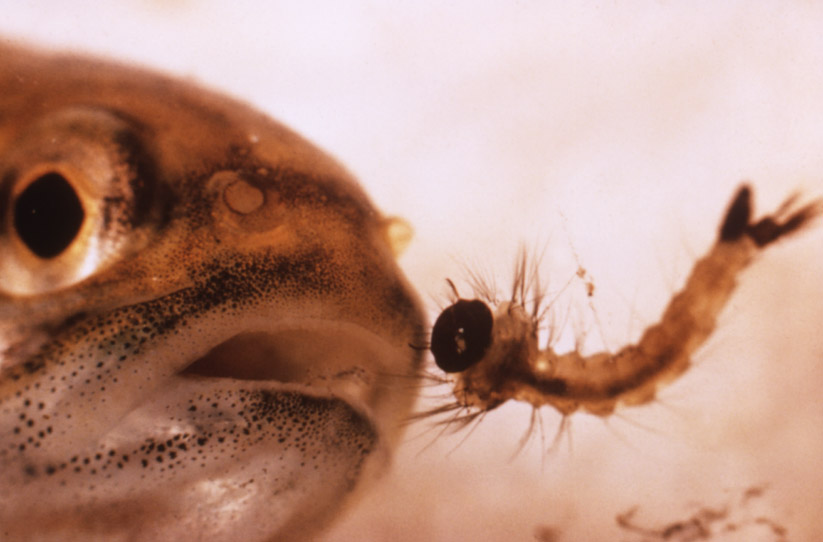Click Here to Request Mosquito Fish for Your Property
The Mosquito Fish (Gambusia affinis), is a live bearing North American topminnow used extensively throughout the world as a mosquito larvae predator. The use of Mosquito Fish to control mosquito larva populations is called “Biological Control”. Biological Control is an important aspect of Integrated Vector Management (IVM). The mosquito fish’s broad use can be attributed to its adaptability, hardiness, and ability to produce large numbers of offspring in a short period of time. A female will drop 40 to 60 fry per brood, and may reproduce 3-6 times per summer.
Although Mosquito Fish are not native to California, they have been well established in wetlands and drainages within Santa Cruz County for over 40 years. Since they can compete with native fish and amphibians, they should never be introduced into any natural water systems. Santa Cruz County Mosquito & Vector Control sources its mosquito fish from natural water bodies throughout Santa Cruz County using fish traps. Once trapped, the fish are transported to our fishery where they are held until they can be redistributed to residents.
Mosquito Fish are most useful in animal water troughs, unused swimming pools, and ornamental ponds and water features. If you are no longer in need of your Mosquito Fish, we can safely remove them and reuse them elsewhere. Life expectancy of Mosquito Fish is 2 to 3 years, although a die-off may occur during the colder months. The female of the species reaches a size of 2.5 inches in length while males are smaller, typically under 1.5 inches in length.
Mosquito Fish can tolerate water temperatures between 33°F and 104°F, but prefer temperatures between 77°F and 86°F. They are often found in the shallow, unshaded region of a pond. They are primarily carnivorous; a single adult mosquito fish is capable of eating hundreds of mosquito larvae per day. During the warmer months when mosquito larva are present, the fish do not need supplemental feeding. When mosquito larva are not present, supplemental feeding with basic flake fish food is needed. Algae does not harm the fish and supports both water quality and a variety of zooplankton that the fish feed on. Excessive algae, however, can become unsightly, foul pond filtration, or deplete oxygen in the water. Introducing fish into a pond is best done by placing the container with fish directly into the pond for 10-15 minutes to acclimate the fish to the new water temperature. You may then release the fish into the pond.

(Gambusia affinis – Credit CDC 1976)